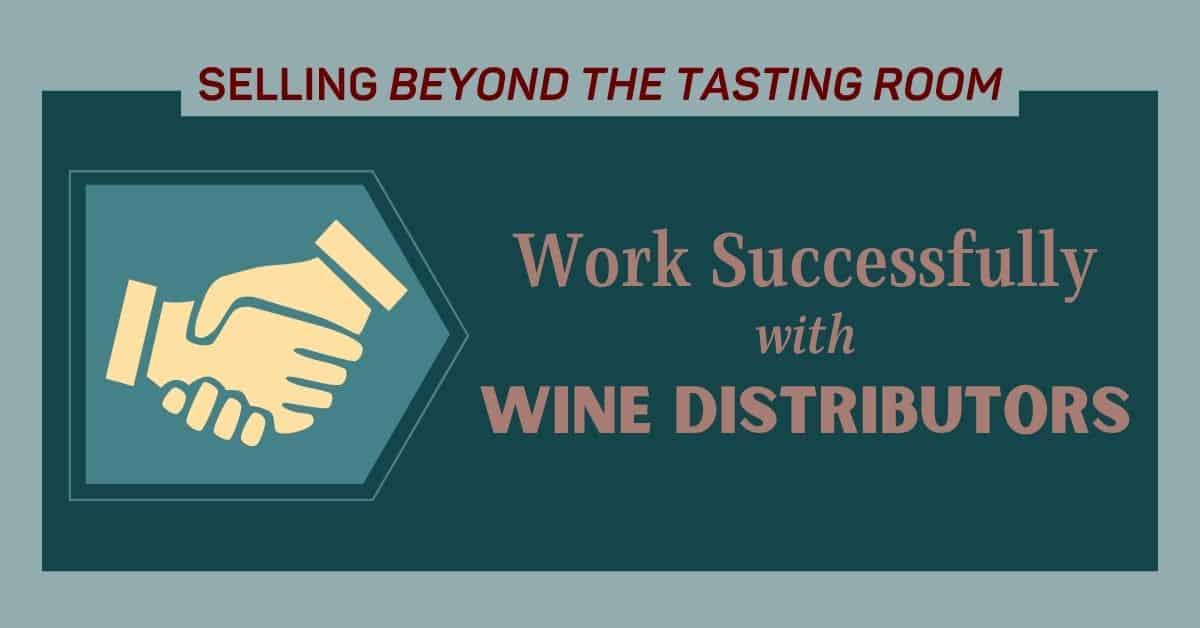How to Work with Wine Distributors in the New Digital 3 Tier System
Thanks to the pandemic, the rise of online wine ordering, dramatically increased competition. Wineries everywhere need to learn to sell beyond their...
7 min read
 Dan Salisbury
:
7/29/22 7:00 PM
Dan Salisbury
:
7/29/22 7:00 PM
Table of Contents
Selling wine or spirits DTC (Direct-to-Consumer) from your website is the most reliable way to take control of your own destiny when it comes to selling online and outside of your tasting room.
Compared with efforts to expand your distribution in the 3-tier marketplace, the risk of things going awry in the hands of other people – key decision makers like buyers and distributors – is laughably nonexistent. With all of the user-friendly tools now available, geared specifically for the wine & spirits industry, it’s easier than ever for small businesses to get started selling wine online.
So much of winning Direct to Consumer (DTC) sales has to do with optimizing and streamlining all of the systems that lead up to a purchase, during checkout, and after purchase for repeat business and even referrals. If your DTC sales are a flywheel where the goal is to achieve momentum, removing as many obstacles as possible and providing a white glove experience for your customers will ensure that your business feeds into itself in a way that’s self-sustaining and easy on your advertising budget.
Stay tuned to the end of this post where we offer a free website audit to guide you in where you can improve and optimize your winery or distillery website for more sales.
Having utilized numerous wine or spirits industry-specific e-commerce solutions that have sprung up from the ground and evolved in recent years, I can say with confidence that they are not all created equal. Commerce7, eCellar, WineDirect, Orderport, VineSpring, vinSUITE, Vinoshipper, Offset, Speakeasy, BarCart by Mash & Grape, Liquor Pilot, Big Thirst – some share more similarities than others, all have their pros and cons, and you ultimately have to figure out which one is going to work best in your use case for selling wine or spirits dtc.
Whether they’re taking a cut off the top of your online sales or they’re charging monthly fees (in varying degrees of heft), you’re going to have to put some skin in the game. In return, you’ll get product and/or collection page templates, compliance features or integrations, some automated email features (order confirmations, abandoned carts, etc.), analytics, various integrations with other marketing tools, optional marketing help for hire, and hopefully some really sophisticated reporting. Some have more “clean,” user-friendly interfaces and some have a wide array of capabilities but require a steeper learning curve to master.
There is always the option for an industry-agnostic e-commerce solution like WooCommerce or Shopify. These tend to offer more flexibility, customization, and tenure from their decades of enduring feedback and failures. What they might lack in alcohol industry features, they make up for in practically limitless capability.
While it can be tedious and a bit painful up front, taking the time to shop around and book demos with several of these e-commerce solutions will give you the best idea of which one is most capable of meeting your particular needs for dtc sales.
Prepare questions ahead of time and really grill the presenters – if they can’t answer your questions, do reach out to their support team and see if they can provide no-BS, satisfying answers. Think of past challenges you have faced with your webstore, or consider the features and functions you wish your webstore had right now. Transferring all of your data from one e-commerce platform to another can be a huge pain, a time suck, and/or expensive. Getting it right the first time will save your employees across multiple departments many headaches down the road.
Ensuring your website loads lightning fast and streamlining your shopping experience for painless purchase can make or break your DTC sales. No matter how many brands and SKUs you have to offer, no matter how competitively they’re priced – if it’s a chore to add items to the cart, enter in shipping and billing info, and purchase, your marketing efforts will have gone to waste.
Make sure your website is hosted on a plan that’s realistic for the volume of simultaneous visitors you expect to see (or even hope to see soon) during the busiest times of the year. This is not the place to make budget cuts. Avoid using any videos, animations, multimedia elements and file sizes that take forever to load on your site. Use an image compressor and let your messaging do the heavy lifting. The last thing you need when that sale announcement hits your email subscribers is a failure for your sale page to load; second chances are hard to come by when you have thousands of competitors meeting or beating your prices and convenience.
Do provide quality bottle shots and product info at a glance. Shoppers shouldn’t have to download one of your tech/fact sheets from the Trade page on your website to get the information they need about your wines. (You do have an area designated for B2B on your website, right?) Consolidating all of the consumer-relevant information about your product and presenting it in a simple, clear format is a huge part of demystifying your offering.
Here are just a handful of the ways that automation can increase your sales dramatically.
This isn’t just about upselling or squeezing all we can out of our customers’ wallets. It’s about providing quality offerings that benefit both parties by taking advantage of logistics and improving the overall experience your brand delivers.
Things like product bundles, cart minimums, limited time offers, and flat rate shipping can revolutionize the way people buy wine from you. Bulk discounts and periodic sales are what ultimately enable our own online storefronts to compete with aggressive retail pricing. Wine is so expensive to ship that flat rate shipping and “shipping included” (the California ABC prohibits “free shipping” of alcohol but allows shipping “to be included in the price.”) deals make it so much easier for shoppers to say “yes” to your offer. Just be smart about it and leverage those cart minimums to unlock the discount.
By using the aforementioned conditional widgets or similar capabilities, you can even offer relevant items last minute during checkout – that is, if you truly have something of value to further enhance the customer’s enjoyment of the product they’re already ordering. Think of glasses, cigar holders, flasks, and other merchandise that has the potential to keep your brand top of mind while providing a fun way to consume your juice after it’s arrived.
Ironically, by keeping your discounts deep and competitive, your average order value may increase – again, if you make the discount bundle or quantity-based.
It’s technically not legal to entice consumers to purchase more alcohol than they would otherwise. We’re not lawyers and this is in no way intended as legal advice: a) not only is everybody doing it anyways, but b) you may have plausible deniability under certain circumstances involving products bundled like gift baskets, etc. Please consult your attorney to be on the safe side.
Many of the wineries and distilleries I’ve worked with were sitting on years of extremely rich customer data replete with things like Lifetime Value (LTV), Sales by SKU, Sales by Channel, Average Order Value (AOV) – years of thousands of customers’ purchase history – but had no idea what to do with it.
It sounds hyperbolic when people say things like “data is everything.” It’s not everything, but . . . data in the right hands? Oh, yes it is.
The big caveat here is that you need enough of it. Facebook says that for its algorithm to get a real sense of what type of person is likely to buy your products – in order to build a lookalike audience – you need 100 customer email addresses (from the same country) at minimum. The more data points you can provide – first name, last name, email, zip, etc. – the higher the chance that Facebook will be able to match every contact you’ve provided to its users.
The harsh reality is that it takes a long time for a new winery or distillery to get to 100 customers – let alone from a single channel like the webstore. Once you hit that threshold, however, the potential targeting rewards are immense. Imagine how much better this gets when thousands of people have purchased from your website over the years; the algorithm is able to target more accurately and deliver the exact prospects you need eyeballing your sale page.
Newbies, take heart; if you don’t yet have 100 customers, you can leverage your Initiate Checkouts, AddsToCart, product page views, your most engaged email subscribers, or lookalikes of your followers. Find the deepest point in your funnel that you can harvest 100 emails from and start there. Maybe that means exporting a list of your 4 and 5 star Mailchimp subscribers to upload as a custom audience or using the Meta pixel to create a custom audience and lookalikes from everyone who has added something to their cart in the last 30 days.
If your e-commerce system is integrated with the POS in your tasting room(s), even better; while it’s not the target channel of these campaigns, those email addresses still represent customers with purchase history (they just may or may not be the online shopping type). The quality of your warm audiences will grow with time – and the smarter you are about leveraging the data you do have, the faster this will happen.
With data like “Sales by SKU,” you can get even pickier about who you’re targeting when you launch a themed sale on rosé or bourbon, for instance. You needn’t fatigue the same audience over and over with irrelevant offers. Careful segmentation of your email list based on click behavior also helps provide your customers with this best-in-class, 1:1 marketing experience.
All of this assumes you’ve followed point #1 and picked an e-commerce provider that not only collects this data for you, but allows you to easily run reports and export them with a few clicks.
Since everyone’s situation looks different, why not get in touch with someone who knows how to rake in the DTC dough?
We'd like to offer you a FREE website audit; no strings attached, we promise! We really do want to share our knowledge and help you with your website strategy. Learn more about our free website audit.

Thanks to the pandemic, the rise of online wine ordering, dramatically increased competition. Wineries everywhere need to learn to sell beyond their...

Selling more wine & spirits is the #1 imperative With very few exceptions, the number one request I get from my clients is to help them sell more wine
.jpeg)
Many who love data also love wine, but the converse is rarely true. Wine is fun, flirty, artistic – scientific in its production, yes, but more of a...